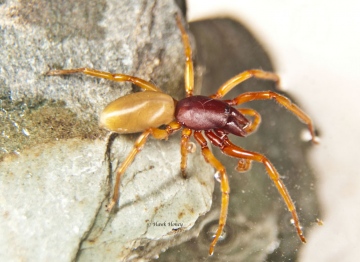Summary for Dysdera erythrina (Araneae)
previous species | next species
National Distribution
Terms of Use. Double-click on map to go to region

Explore Regional Distribution
Identification guidance for Dysdera erythrina
Please log on and add a note on this species
About this species
Recorded altitude range0m to 700m
Species text
DistributionD. erythrina is widespread in much of the south of Britain but practically absent in the north. It is widespread in western and central Europe, but absent from Scandinavia.
Habitat and ecology
This species occurs in maritime habitats where it may be the dominant member of the genus. It is frequent on heathland, to the exclusion of D. crocata and is more often associated with ants (P. Merrett, pers. comm.). It has been recorded from permanent grasslands, disused railway tracks and ancient woodlands (Crocker & Dawes 1996), from under stones, logs and debris and possibly sometimes in damp gardens. It is very rare in Essex where it only occurs in old and undisturbed habitats (P.R. Harvey, pers. comm.). The species is usually replaced by D. crocata in disturbed habitats (Cooke 1965, 1968). Like D. crocata it specialises in eating woodlice, rejected by most other spiders. Adults have been recorded all year round with peaks in late spring/early summer and autumn.
Status
This species is generally very local but may be abundant where it does occur.
Original author of profile: P. Smithers
Text based on Harvey, P.R., Nellist, D.R. & Telfer, M.G. (eds) 2002. Provisional atlas of British spiders (Arachnida, Araneae), Volumes 1 & 2. Huntingdon: Biological Records Centre. References
Adult Season
Habitats
background methodology
Recorded management for locations with Dysdera erythrina
Recorded substrate and hydrology for locations with Dysdera erythrina
Images
please log on and upload a new image for this speciesSee also A-Z Species Index - A-Z Picture Index - previous species | next species



